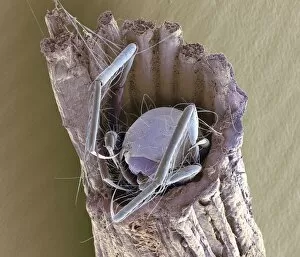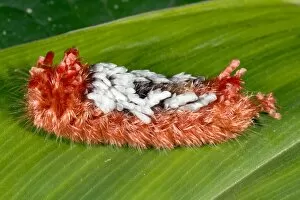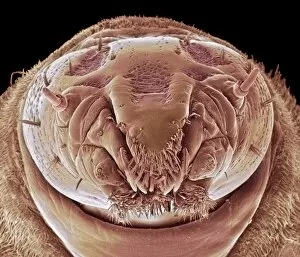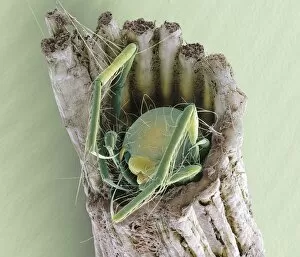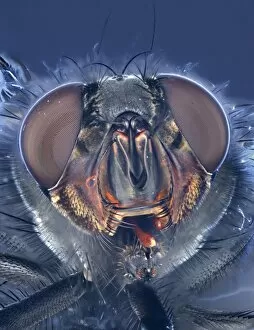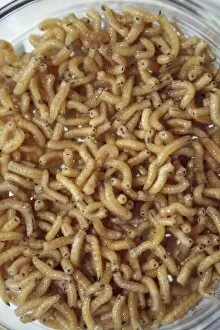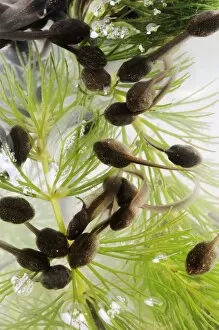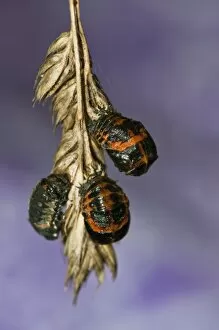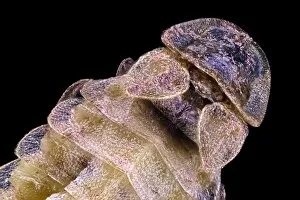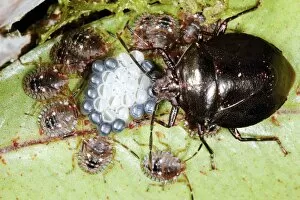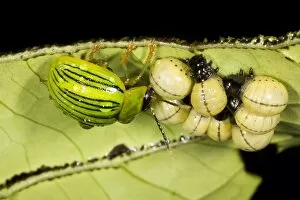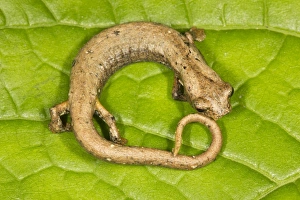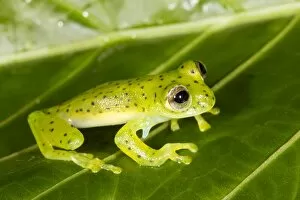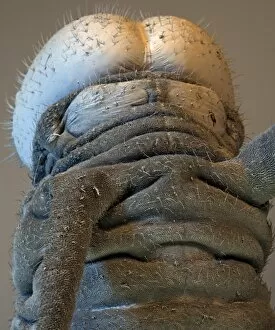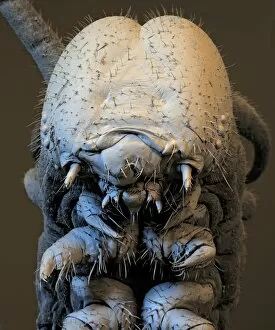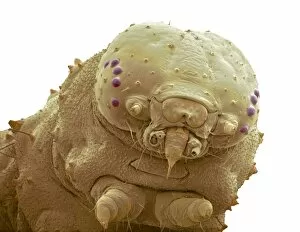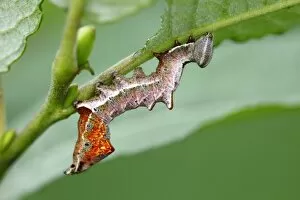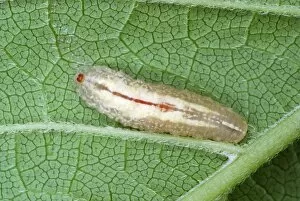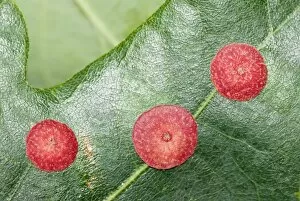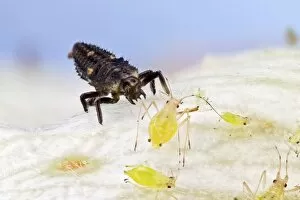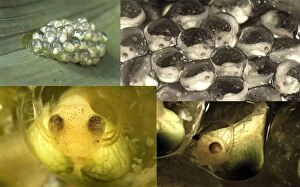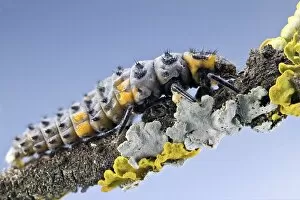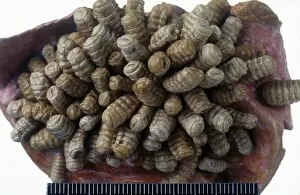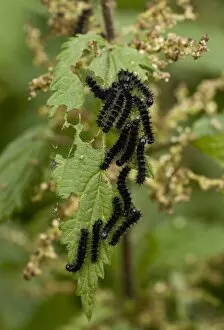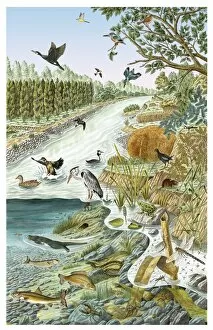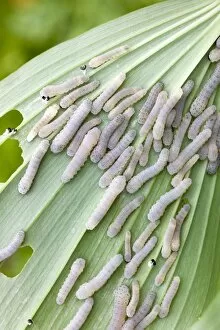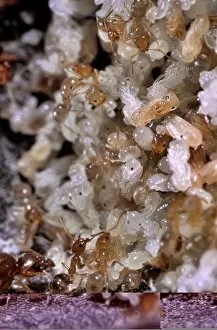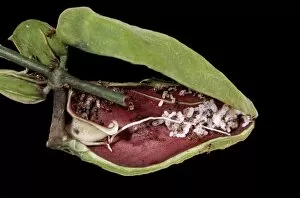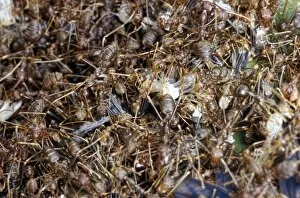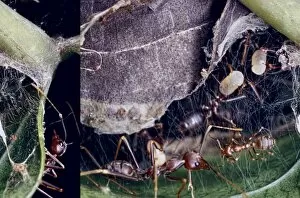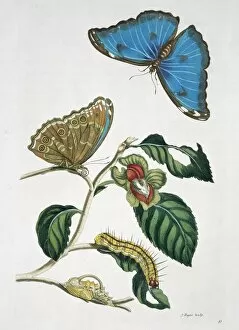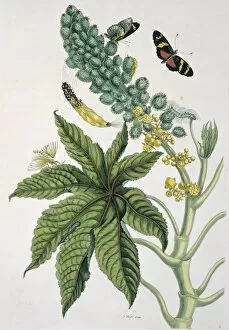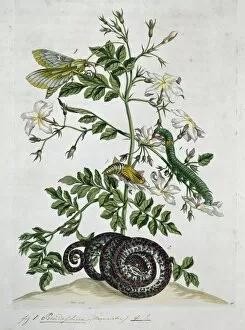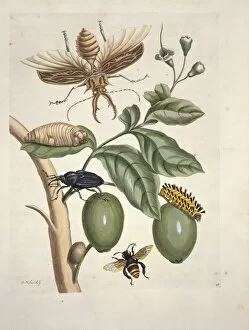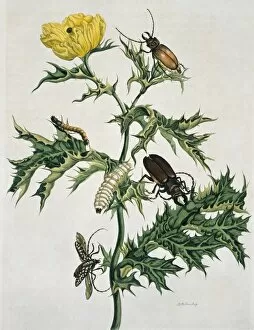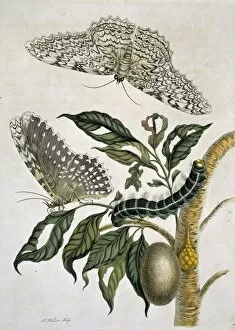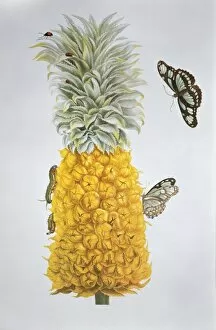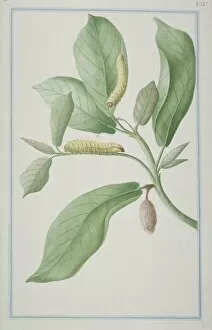"Larvae: The Fascinating Transformations of Nature's Young" From the bustling honeycombs of Apis mellifera to the enchanting life cycle of a Sea green swallowtail butterfly, larvae offer us a glimpse into the captivating world of metamorphosis. In the depths of a honeycomb, tiny honey bee larvae wriggle and squirm, nourished by royal jelly as they prepare for their remarkable transformation. A cross-section reveals an intricate network of cells, each housing a growing larva that will one day become an essential member of its hive. Meanwhile, newly hatched tadpoles embark on their aquatic journey in search of adulthood. These Common Frog larvae navigate through ponds and streams with graceful movements, adapting to their watery habitat until they are ready to emerge as fully-fledged frogs. The Tobacco hornworm finds solace amidst lush tobacco plants, munching away at leaves while undergoing its own growth spurt. Its vibrant green body serves as camouflage against predators who dare challenge this voracious caterpillar. A fuzzy Wooly Bear larva crawls along forest floors, showcasing bold stripes that hint at its future identity as a Tiger Moth. This resilient creature endures harsh conditions during winter months before finally pupating into its magnificent adult form. The Monarch Butterfly caterpillar embarks on an epic migration journey fueled by milkweed leaves alone. As it feasts upon these toxic plants, it absorbs chemicals that protect it from predators—a testament to nature's ingenious strategies for survival. Parasitic Wasps take advantage of unsuspecting hoverfly larvae in the UK countryside; laying eggs within them ensures food for their own young when they hatch, and is both fascinating and unsettling how nature can be both nurturing and ruthless simultaneously. A Hoopoe bird proudly clutches a plump grub in its beak—nature's fast-food delicacy—providing sustenance not just for itself but also for its hungry chicks waiting in the nest.

